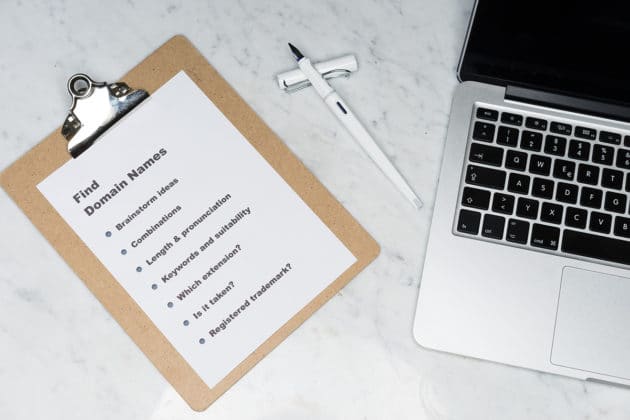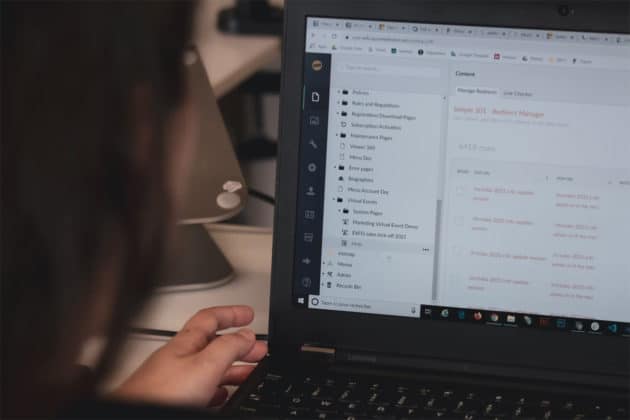A blog is a powerful tool for businesses to market their brand, promote products or services, and grow their audience. They can be a great asset that brings in organic traffic and lowers the overall cost of your marketing efforts.
However, businesses are not the only ones who can benefit from a blog. People who own a blog can share their expertise on specific topics, such as marketing, fashion, or technology.
Blogging also creates opportunities for people to learn new skills, expand their knowledge, increase their online presence, and even profit if they choose to monetize the blog.
In this article, we will share a step-by-step guide to create a blog from scratch. Read along and learn how to start and grow your own blog to success.
1. Find a Blogging Purpose and Niche

Setting a purpose is a fundamental aspect of creating a successful blog. So before picking a topic and using a blogging platform, think of the specific reason why you want to create a blog.
You can set missions to keep you consistent and productive when blogging with a clear purpose in mind. The process takes effort and time, but the result can be rewarding.
For example, schedule to upload 2 to 4 blog posts every week, keep the traffic constant, and rank your blog on search engine result pages (SERPs).
If you are struggling to find your blogging purpose, answer these three questions to guide you.
Recommended for you: How to Sell Products on Your Blog? 12 Noteworthy Tips for You!
Who Is the Target Audience?
Ask yourself the question of who you will serve with your blog. For instance, you could create a blog to provide tutorials about WordPress for beginners or provide technical articles to help solve issues related to websites and networking.
What Makes Your Blog Unique?
Think of ways to keep your audience coming back to your blog. For example, you can consistently create quality content on your blog with added aspects like videos or podcasts.
What Is Your Expertise?
Consider what specific topics you are good at. For example, if you are good at giving solutions, create an educational or informational blog.
If you have found a blogging purpose, it is time to choose a niche. It is not a must, but having a niche is quite beneficial for your blog.
A specific niche can give you more focus on what you should write about and increase your chances of having fewer competitors.
There are many different niches to choose from. To give you a better understanding of what we mean, here’s a list of sample niches:
- Business & Marketing. If you’re good at understanding how business and marketing work together, you can provide valuable content for your readers.
- Education. This niche can include college recommendations and studying advice. It can also work well if you eventually want to provide online courses as well.
- Fashion. This is one of the most popular niches. The fashion niche also provides amazing opportunities to use social media platforms like Instagram and Facebook for more visual content.
2. Pick a Domain Name and a Web Hosting Service

Having a click-worthy domain name is essential because it increases the chances of getting more traffic and ranking on SERPs.
A good domain name represents your brand identity, giving your blog more credibility and appearing more professional. However, creating one can be pretty demanding, especially if you don’t know how to go about it.
Here’s how to choose a good domain name and register it with a reputable service.
Pick a Reputable Domain Registrar
There are many credible registrars to choose from, like Hostinger, Domain, GoDaddy, and Namecheap. Using the right registrar can prevent domain name-related problems, such as dns_probe_finished_nxdomain.
Keep the Domain Name Short and Simple
A short and simple domain name lets visitors recognize and remember your blog much easier. Ideally, it should contain only one to two words. For example, “beautyfashion.com” is easier to remember than “fashiondefinesbeauty.com”.
Consider Using a Unique or Brandable Domain Name
A brandable domain name doesn’t always tell what your blog is about. It is used to make a unique or stand-out domain name, which can linger in visitors’ minds.
Google.com, Pinterest.com, and Facebook.com don’t explicitly tell what these companies or businesses are about, but they are definitely brandable, as most people can recognize them nowadays.
After registering your domain name, decide on a web hosting service to host your blog. Consider picking a web hosting service that suits your needs and budget.
After your hosting plan is activated, point your registered domain name to your web hosting, and you are ready to build a blog.
3. Install a Content Management System

A CMS is a powerful platform to manage and store your blog content. There are many great selections of CMS to choose from, such as WordPress, Joomla, Drupal, and PrestaShop. Conduct some research and select which CMS best suits your needs.
Install your chosen CMS to your web hosting panel when you decide which one to use. Fortunately, most web hosting services offer plans with free CMS integration, which means you won’t have to do it manually.
4. Customize Your Blog

After CMS installation is complete, you are now ready to customize your blog. The process is relatively easy, but don’t beat yourself to finish everything at once. Prioritize on completing the essential parts first.
Say you are designing your blog using WordPress. Here are some essential steps you will have to take before having your blog accessible online:
- Pick a template. WordPress comes with an extensive collection of different templates. Choose one that suits your niche.
- Customize the homepage and the menus. Play around with the design of the blog homepage and create clear menus to help visitors navigate through pages.
- Install essential plugins. WordPress also comes with many excellent plugins that can benefit your blogs, such as Jetpack and Yoast SEO.
You may like: 10 Excellent SEO Friendly Blog Post Content Ideas.
5. Publish and Optimize Your Blog Posts

To make a lasting impression on your visitors and entice them to return to your blog, focus on creating quality blog posts. This means creating content that is engaging, valuable, and easy to understand.
Additionally, implement search engine optimization (SEO), a crucial practice to maximize your blog’s performance. Applying SEO helps boost your blog rank on SERP, increase your blog organic traffic, and profit from monetization methods.
Here are some SEO-friendly practices to implement in your blog:
- Research for less competitive keywords. These keywords increase the chances of ranking your post on SERPs.
- Write fresh and unique blog posts every time. The way to boost your post reputation on search engines is to write posts with new and unique content only.
- Structure your content. Implement headings and subheadings to break ideas apart and make the content easier to read.
- Optimize images. Add alt text on your posts’ images to define images’ relevance in search results.
6. Use social media to promote your blog

97% of bloggers said that promoting your blog through social media increases traffic, which shows that social media can be an effective way to boost your blog’s reputation.
Schedule when and how many posts you will share on social media platforms. For example, two posts per week are good to keep consistency. Also, integrate social media platforms into your blog to create easy access for visitors to connect to your blog and share the content on their social media accounts too.
7. Create a Blog Content Calendar

It can seem demanding to consistently publish content, promote it on social media, and monitor the blog performance. Performing these tasks unscheduled can lead to burnout. Therefore, plan and create a blog written schedule or a content calendar to ensure that you fully carry out these tasks and finish them in time.
A content calendar contains the planning and progress for your content publishing, such as the upcoming topics or ideas, topics in progress, content pieces in review, and content that’s ready to publish. Keeping them in order helps you keep track of your progress, which can improve your time management.
Additionally, a content calendar is essential for bloggers who work full-time or publish content frequently. It helps them stay organized and on track. Managing your content calendar also requires some knowledge so that you can use it effectively.
The following are some tips about organizing your content calendar.
Plan Your Objectives
When you start a new topic, it is important to schedule when you want to finish it. The same goes for content you are still working on. In addition, avoid multitasking to keep your focus on a specific topic, increasing your productivity.
Prioritize Content with High Search Volume Keyword
Working on content with large search volume keywords first. Doing so helps improve the chances of your content ranking well on search engines and increases your incoming organic traffic.
Separate between Writing and Editing
It is recommended to set separate times for writing and editing. The goal is to increase your productivity and publish content faster. Your content might take longer to finish if you write and edit at the same time.
Use a Content Calendar Tool
Scheduling your tasks on a content calendar tool will be more helpful than writing them down in a journal or a notebook. With a blog content calendar tool, you can create a template and customize it to your liking.
There are several recommended content calendar tools to choose from, such as Trello, Asana, KanbanFlow, and Monday. You can get a free trial with most of these tools.
You may also like: How to Make Money from Blogging?
Conclusion

A blog is a valuable asset to boost your online presence. Blog is a great way to create a lasting reputation and build credibility with your target market.
Note that blogging is a process that requires effort and patience, though. It will take some time and energy before you start seeing the full results of your consistent blogging efforts.
To summarize, here are the key points on how to start a successful blog:
- Figure out your blogging purpose and choose a niche.
- Register a domain name and get a web hosting provider.
- Install a content management system.
- Customize your blog.
- Publish and optimize blog posts.
- Promote your blog via social media.
Apply these steps when you decide to start a blog, and you’ll find the whole process much more enjoyable and effective. Good luck!





